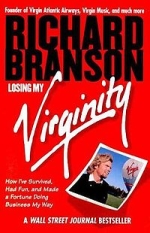Architecture of the Novel – a writer’s handbook
December 15, 2010 0 By Pramathesh Borkotoky
Book: Architecture Of The Novel: A Writer’s Handbook
Author: Jane Vandenburgh
ISBN: 1582435979
ISBN-13: 9781582435978, 978-1582435978
Date Published: August 17, 2010
Language: English
Last September, I got my hands in this book and I read it leaving all other books that are dying to be read in my book shelf. Reading this book was a new experience and it changed my life as it cleared off many blocks in my mind regarding developing of a story. Books on the craft of fiction writing are very rare and any book in the genre is always welcomed by people who believe that writing can be learnt. Most books which deal with this topic always make a mistake that it becomes too technical for novices like me that it becomes a major turn off. But, the good thing about this book is that it maintains that we should let the story take its own shape and it only tries to teach how to listen to that. It was a major relief as I started reading the book. The author repeatedly tells that each story has its own individuality and no how to do book can tell how to write a particular story. To quote from the book, “The rules regarding the construction of our book are, of necessity, are wrong for you because your book is individual. This means only your novel itself can tell you exactly how it needs to be made. No one else has seen what there is to see, heard what your story is hanging out.” (p. 11)
Another such relief comes from the fact it not like other How to do books by the fact that the book is written like a novel, and the reader does not feel the burden of learning making things easier. The author uses an example of story and how it was built block by block to make the reader understand the architecture using her craft of storytelling. The author knows well about the subject and is veteran in the field that comes across very well with this fact. It is like a teacher to student discussion in a classroom. This makes visualising concepts easier, as my friend Deepti Richa pointed out.
The book is divided into two parts, the first part deals teaching the narrative skills and building a story while the second part is a glossary of “evolving definitions of the tools and concepts” that the author found useful and necessary in thinking about the longer narrative. The terms provided in the glossary help the reader understand various concepts that help in building a novel.
The book helped me in many ways. Hope it helps you also. I will end with my favourite line from the book, “The Plot will hide what story works very naturally to reveal.”
We welcome your comments at letters@friedeye.com
About the author
Trying to fit into the world. In between I destress by trying to work for Fried Eye.



